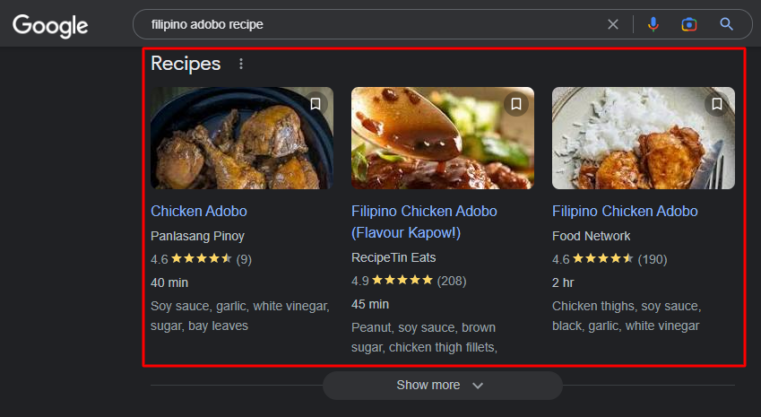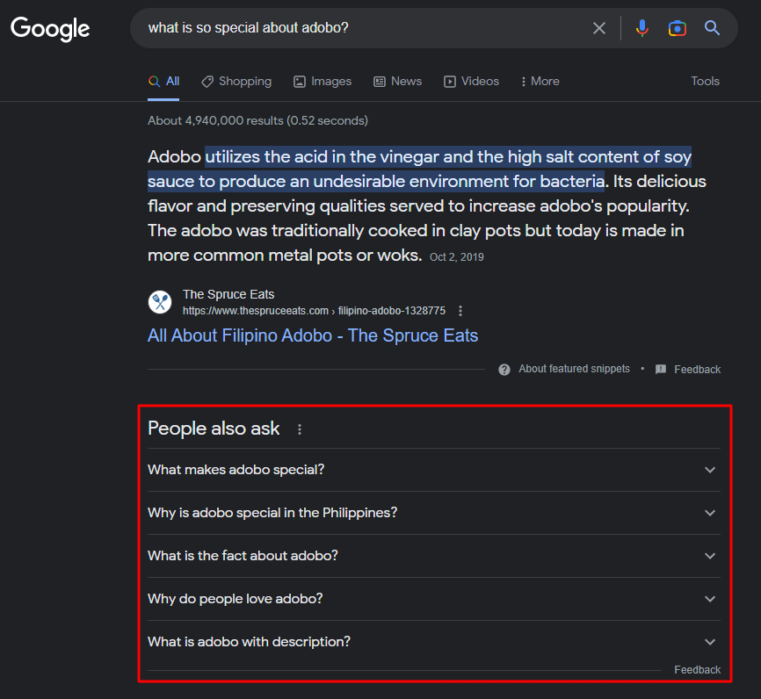We’ve all been there. You type a question into Google, hoping to find the answer you need, only to be met with an overwhelming number of search results that don’t quite get to the heart of your query.
The good news is that businesses can provide their audiences with quality content through answer-based content as part of their search engine marketing strategy. This type of content is designed specifically to address user queries and help them solve their problems without clicking so many pages.
In this article, we’ll cover:
• Content That Converts
• Understanding Search Intent
• Schema Markup and FAQ Schema: What’s the Difference?
• Featuring in People Also Ask (PAA) and Featured Snippets
Quality Content That Converts
Sales copy and marketing materials used to be enough to get people interested in a product or service. But now, customers want more than just advertising copy that’s meant to manipulate them into buying something.
People are looking for problem-solving content that can help them make informed decisions and understand why they need your offering.
While this may not be obvious initially, answer-based resources are great types of high-quality content that converts.
While this content takes longer to create than most other content types, the time and effort invested in making it pays off when you start to see more conversions. This is because people will always have questions about a problem at every step of their buyer’s journey.
“Answer-based content plays a crucial role in improving search engine visibility by providing users the ability to find direct answers to their questions,” said Mike Bové, a search engine optimization (SEO) strategist at Thrive.
“It also helps establish a brand as a trustworthy and authoritative voice on a topic or industry overall, which can improve brand recognition.”
So, if you provide them with answers that directly address their pain points, they’re more likely to turn into paying customers.
What Is Search Intent?
To get an idea of what people are looking for, you must analyze the context behind each user query. Knowing which type of intent lies behind each search will help you create content that accurately answers their questions and gives them the information they need.
“Search intent is the understanding of what the user is looking for or what their goal of searching a specific query is,” Bové said.
For example, if someone types “how to cook adobo,” they’re likely looking for instructions on preparing the dish. In this case, creating a step-by-step guide with pictures or videos is the best way to go.
On the other hand, if someone searches “best recipes for adobo,” they’re probably looking for options that offer different flavors and styles of cooking adobo. Here, a list of several adobo recipes would be more appropriate.
There’s a multitude of search intents out there, but here are four types you should be aware of to help you create relevant answer-based content:
1. Navigational: When users are looking for a specific website or page (e.g., “Facebook login page”).
2. Informational: When users are seeking information about a local business or idea (e.g., “what is search intent?”).
3. Transactional: When users are looking to purchase something online (e.g., “buy iPhone 15”).
4. Commercial: When users are researching a product or service to make an informed decision, e.g., “best web hosting provider”
Notice how each intent has a different goal? This nuance is why it’s so important to understand what kind of content will meet users’ needs before you start creating anything.
Answer-based content is all about providing people with the answers they need in a format that works best for them.
Schema Markup and FAQ Schema
If you aim to improve your SEO content writing, understanding search intent should be a priority. However, you also have to consider structured data on your website, such as your schema markup and FAQ schema.
These two pieces of code help search engines understand what content you are serving and how they should interpret it.
What Is Schema Markup?
Schema markup is a structured data vocabulary that adds context to the information on your website.
Search engines crawl websites and index the information they find to provide relevant results to search queries. However, without schema markup, search engine bots may not fully understand the meaning and relationships behind entities and may not accurately represent your content in search results.
Structured data, which is what schema markup uses, organizes your website’s content and makes it easier for search engines to understand.
When search engines deem your website relevant to a user’s query, they will display your content as a featured snippet in search results.
For example, when you search for a Filipino adobo recipe, Google will show a featured snippet of recipes you can use to make the dish. Google pulled this featured snippet from a website that used structured data and schema markup to provide context for their content:

What Is FAQ Schema?
So, what is FAQ schema, then? Simply put, FAQ schema is a type of structured data that you can use for your section that caters to frequently asked questions (FAQs).
“FAQ schema can be integral to ensure that Google can highlight questions and answers to give a webpage the opportunity to be shown above the competitors in the search engine result or SERP via a featured snippet, while also providing value to potential users of the site,” Bové said
A modern content marketing agency with content writing services always includes frequently asked questions on a product page or other relevant pages where customers are likely to require more answers.
This is a typical search engine marketing strategy because it helps the page to appear in featured snippets and provide a quick answer for the user.
You can also use FAQ schema to appear in a unique type of featured snippet in Google, called “People Also Ask,” which provides users with related answers to their queries in the form of a list that you can click to see an answer.
For example, when you search “what is so special about adobo?” Google will provide a featured snippet of questions and answers related to the dish:

The People Also Ask section will show related frequently asked questions that might be relevant to your search query. You can use this as an opportunity to provide answers to those related queries as well.
How To Feature in People Also Ask and Featured Snippets
Quality content goes a long way in improving your search engine visibility. And, as you may have noticed, search engines are no longer dishing out those plain, old and boring text-based search results.
They now have several opportunities for websites on how to feature in People Also Ask (PAA) and featured snippets. So, how do you maximize these search engine marketing opportunities?
Here are some best practices on how to feature in People Also Ask:
1. Just Ask Google!
When getting started, ask Google a common question and use the questions that come up as prompts for creating your content. This is called “Query Expansion.”
Clicking any question will give an answer that usually matches the tone of the question. Use this opportunity to create content on these questions and provide relevant answers. Also, once you’re inside a results page, the PAA section is an excellent resource for knowing what you should write next.
Bové said that analyzing these questions can help you “gather intel on what topics your audience is wanting more information on,” giving you insights into what content drives more traffic and user engagement for your competitors.
2. Use Google’s PAA Formats
Google’s PAA often highlights content that is clear, concise and in the expected format. “Listicle” articles, where content is presented in a list or table form, often rank high in PAA.
Google uses different elements in search results, such as:
• Images
• Videos
• Tables
• Lists
With videos, make sure you include a title tag that has your primary keyword. Images, on the other hand, require alt tags that match the image and contain your keywords.
3. Use SEO Content Writing Best Practices
You can also follow SEO content writing best practices to increase your chances of being featured. Use H1 tags for the main topic and H2 tags for sub-topics.
Keep the content concise, informational and easy to read. Use bullet points where possible and insert graphics to illustrate key points. This enables Google crawlers to read and analyze your content quickly and present it to the audience in a visually appealing way.
Develop High-Ranking Content With a Reliable Content Marketing Agency
If you want to increase your chances of ranking on Google and keep your rankings for the long haul, then it’s time to prioritize creating answer-based content. Don’t settle for publishing content that doesn’t directly address the questions and needs of your audience.
By tailoring your content to provide real value, you’re giving yourself a better chance of ranking high on the search engine results pages (SERPs). You’re also building a loyal audience that trusts you as a reliable source of information.
However, creating content that converts can be a lot of work. But with Thrive Internet Marketing Agency, you don’t have to worry about it because we take care of everything. Our content writing services cover research, keyword optimization, design, publishing and everything in between.
Develop high-ranking, answer-based content with Thrive and grow your website traffic today. Our content marketing agency is here to help you achieve your business goals.








